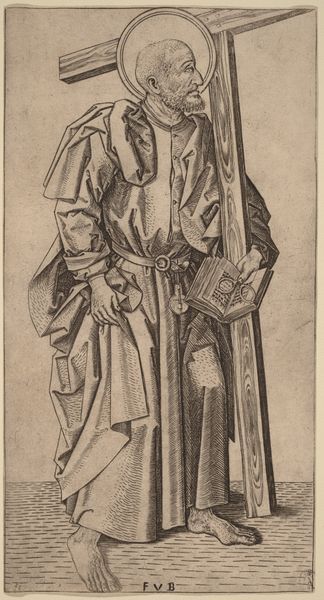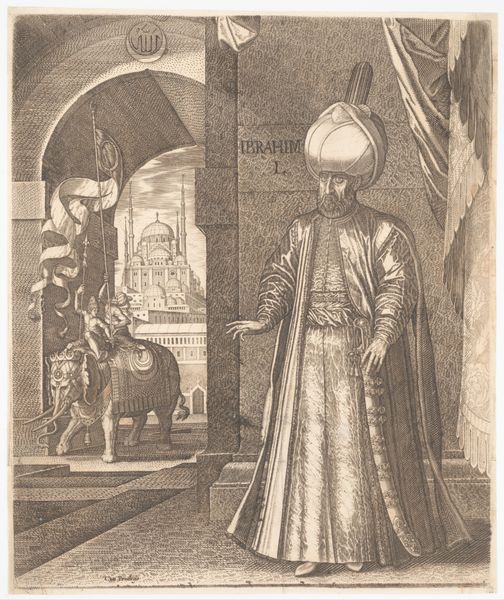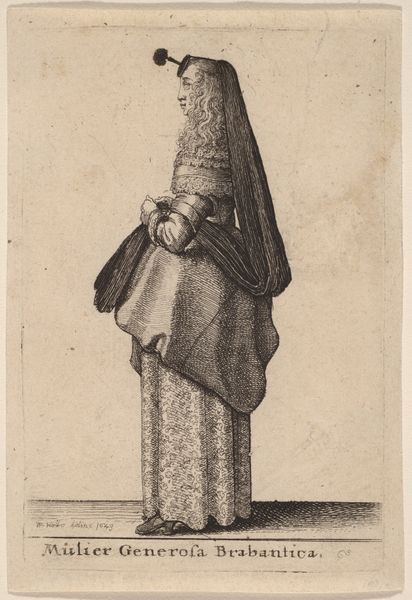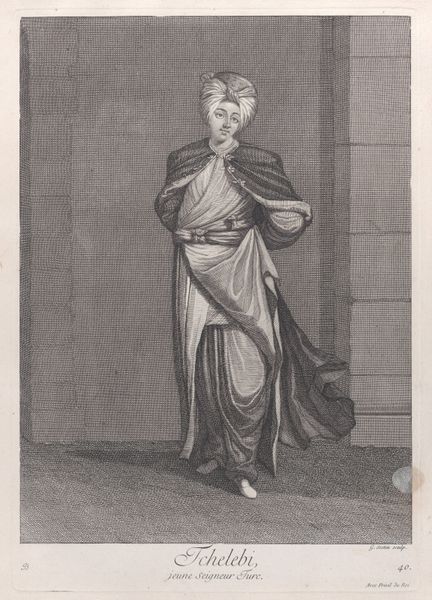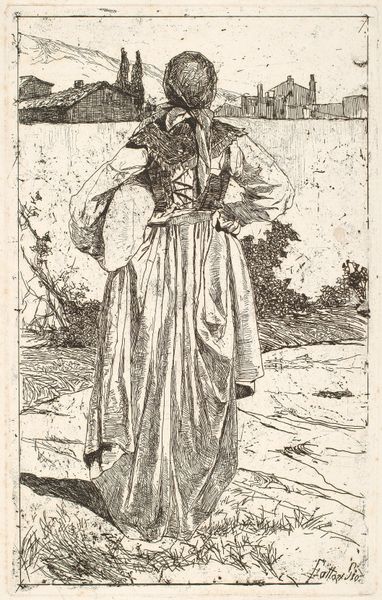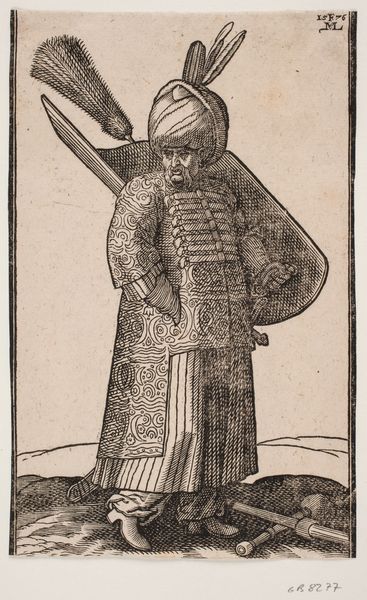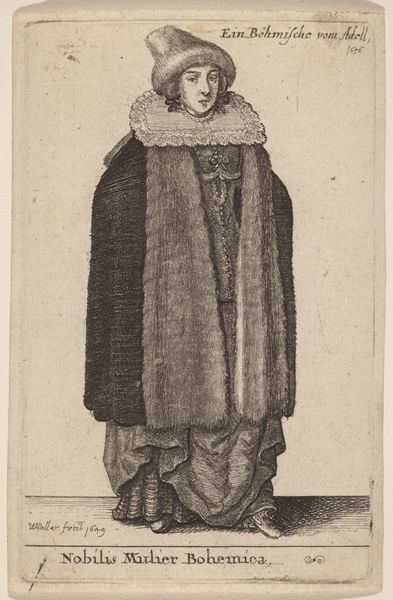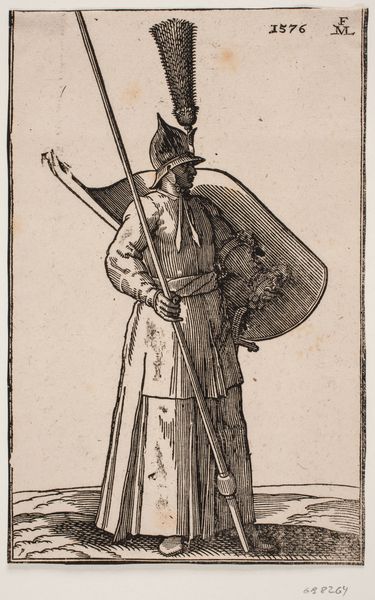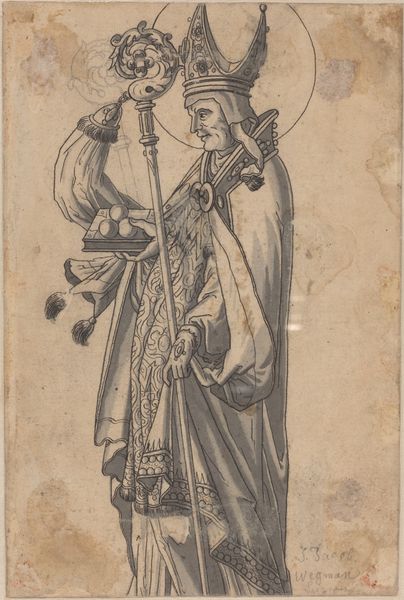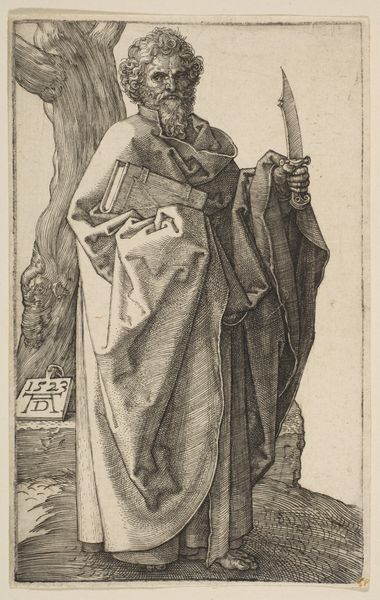
print, engraving
#
portrait
# print
#
asian-art
#
mannerism
#
figuration
#
line
#
history-painting
#
engraving
Dimensions: 393 mm (height) x 278 mm (width) (bladmaal)
Curator: The piece before us is entitled "Prince Ismael, Persian Envoy," crafted in 1573 by Melchior Lorck. It's an engraving, currently residing here at the SMK. The linework is incredibly dense; it’s almost dizzying. Editor: Dizzying is a perfect word. The sheer accumulation of line creates such depth. It’s remarkably textural for a print. I find it evokes a certain solemnity, almost a stoic quality in the figure, heightened by the rather imposing column beside him. Curator: Indeed. The image speaks volumes about cultural exchange and representation in the 16th century. Envoys like Prince Ismael served as crucial bridges between vastly different societies, navigating complex political landscapes and influencing early European perceptions of the "Orient.” How were these intercultural figures perceived, and what power dynamics existed in this gaze? Editor: Power is evident even in Lorck’s technique. Observe the meticulously rendered details in his attire—every fold, every pattern. The composition leads the eye directly to him, isolating his person from what would appear to be elements of his surroundings, with buildings and an obelisk barely visible. The figure stands apart. This is a clear articulation of prominence within a visual hierarchy. Curator: It’s intriguing that Lorck chooses to juxtapose the Prince with classical architectural elements. Are these intended as markers of status, linking Ismael to a Western lineage of power and authority, or does it symbolize something deeper—the artist's awareness of intersecting identities? This approach begs important questions about orientalism and cross-cultural depiction in art. Editor: Perhaps, but also consider the technical brilliance of Lorck. The varying densities of line not only render depth but also define the tactile qualities of different surfaces. The soft drape of his robes, versus the cold hardness of the stone column; such effects can speak powerfully about social distinctions—how he wanted this figure to appear to his audience. Curator: Undoubtedly. And thinking about the context in which it was made—Europe was undergoing immense socio-political shifts at the time, encountering diverse populations from across the globe—such imagery would have played a role in the era's burgeoning awareness, and also possible misinterpretations, of other cultures. Editor: A thought-provoking demonstration of how even seemingly straightforward portraiture can invite conversations reaching well beyond the immediately visible. Curator: Absolutely. Lorck offers us more than just a likeness; he hands us an open door for interrogation on identity, representation, and cultural dialogues throughout history.
Comments
No comments
Be the first to comment and join the conversation on the ultimate creative platform.


